While other parts of the country lied dormant under snow and ice, here at O’Mara Acres we were seed-starting, building raised beds, landscaping, and so much more.
Take a peek into my garden journal from January 2023 and read how we prepared for the upcoming garden season.
Click the links below for shortcuts to each section.
- Week 1
- Week 2
- Week 3
- Week 4
- What’s Blossoming Now
- Harvest Summary
- Resources
- What’s Next?
- What do You Think?
Journal Entries Week 1
January is seed ordering and seed starting time here at O’Mara Acres. This year I purchased seeds from: Seed the Stars via Etsy, Hoss Tools, Southern Exposure Seed Exchange, and Florida wildflowers from Zellajake Farm and Garden, a local grower here in Central Florida.
We purchased the following edibles to add to our homestead gardens:
- Cossack Pineapple Ground Cherry
- Crimson Sweet Watermelon
- Tropic VFN Tomato
- Mortgage Lifter VFN Tomato
- South Anna Butternut Winter Squash
- Seminole Pumpkin
- Seminole XR Sweet Corn
- Luffa Gourds
- Black-Seeded Yard Long Beans (snake beans)
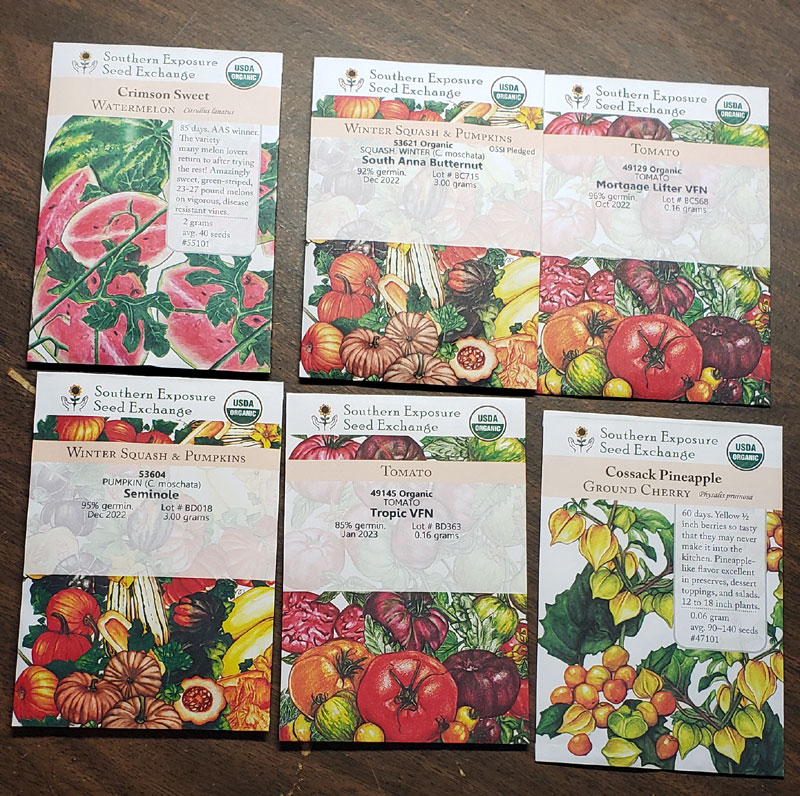
The first weekend of January we also chipped wood from the brush pile, finished building the fire pit in the back yard, and I painted three of the raised beds with green paint to match the garden shed.
Carrots, beets, and cabbages had been growing slow in the cooler and darker days of December. But the lengthening days after solstice encouraged faster growth. I thinned the carrots and beets then gave some of the greens to the neighbor’s chickens. They weren’t very fond of the carrots, but loved the beet greens!
The citrus trees were looking great; the apples, peaches and persimmons were still dormant. Our old loquat tree in the back yard had small fruits on it as well as blossoms.
Only the avocado trees had me concerned. One of the four trees looked like it had been killed by the heavy frost back in December. The other three had green leaves still on them which promised recovery.
Safely sitting on my kitchen windowsill were glass jars of longevity spinach, Okinawa spinach, two pineapples and a cranberry hibiscus cutting that was growing roots. Once the weather warmed up, I planned to plant all of them in the food forest.
Journal Entries Week 2
Seed trays and heat mats were set up the second weekend of January. I planted tomatoes, peppers, and ground cherries. I’ve never grown ground cherries before. Everyone says they’re delicious. I can’t wait to try them.
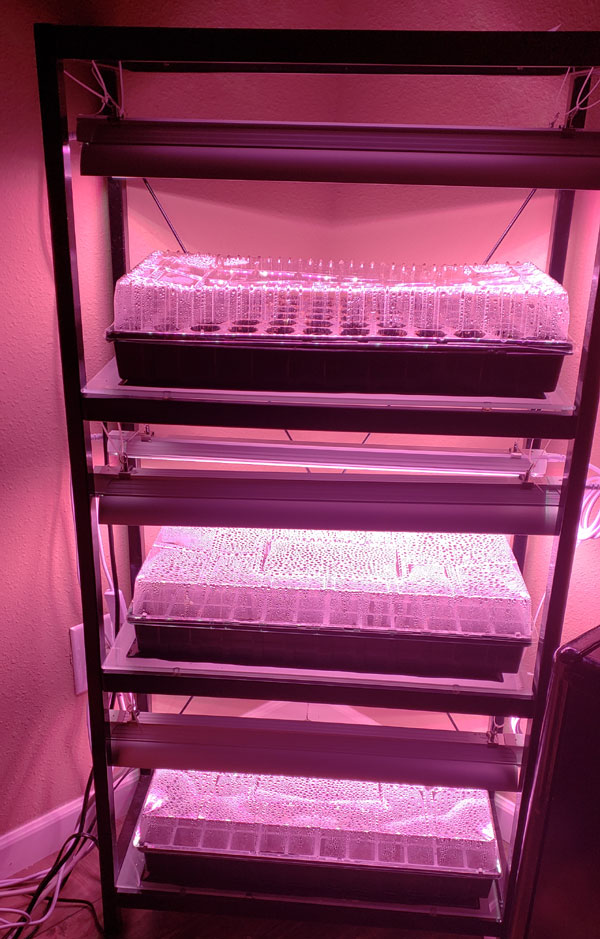
I used several of my custom designed Seed Starting Trackers and Seed Tray Maps to keep track of everything. You can find these and other gardening and homesteading printables in my Etsy Shop: HomesteadByDesign.
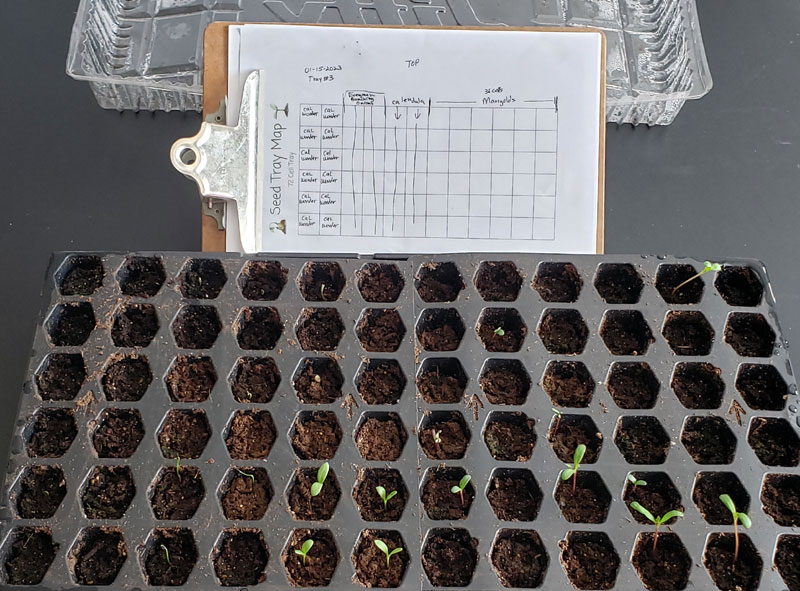
Another winter cold front was approaching, so on the fourteenth, we once again covered the raised beds with sheets and moving blankets. At 7:00 a.m. the following morning it was 30°F. With frost warnings predicted for a second night in a row, we left everything covered.
Monday evening after we got home from work, we uncovered the garden beds. Nothing that had been covered was damaged. However, we had not covered the dragon fruit trellises. I had just wrapped two of the vines with blankets. Within less than a week, most of my dragon fruit vines that I had grown from seed three years ago were now yellow and dying. Those I had wrapped with blankets looked green and healthy.
I’ve started rethinking my plans for growing dragon fruit. I cannot see myself trying to cover sprawling cactus vines every winter with frost blankets. I’ll continue to grow what survives, but maybe plant a few under an evergreen tree like a loquat or live oak. I have seen people around here growing succulents. It’s time for me to do more learning and research.
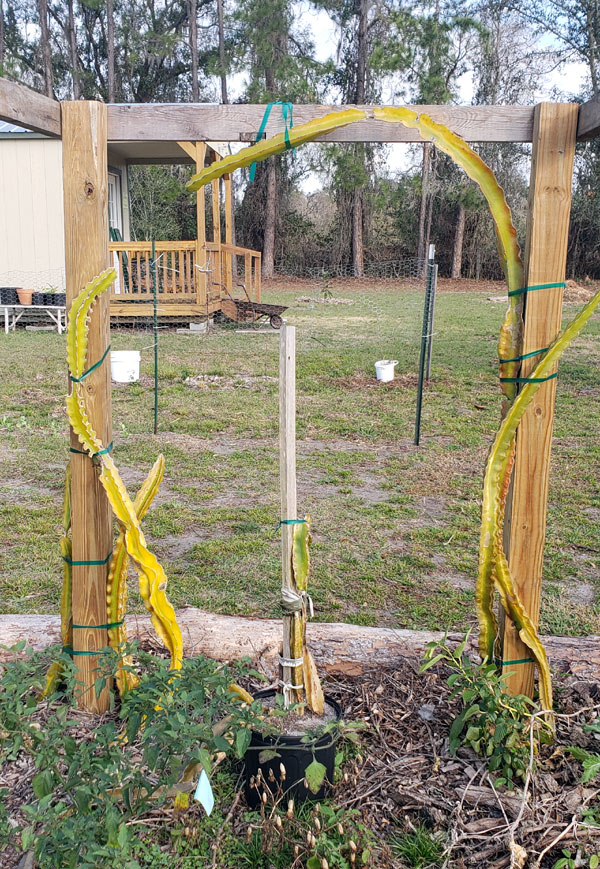
Journal Entries Week 3
Potato time!
Saturday the 21st we bought 4 varieties of potatoes. Reds: Pontiac and Lasota. Whites: Yukon Gold and Kennebec. I chit the potatoes and set them to sprout in the spare bedroom. We ended up with 70 pieces to plant. I had originally planned to grow potatoes in two raised beds. Now, we were looking at four beds.
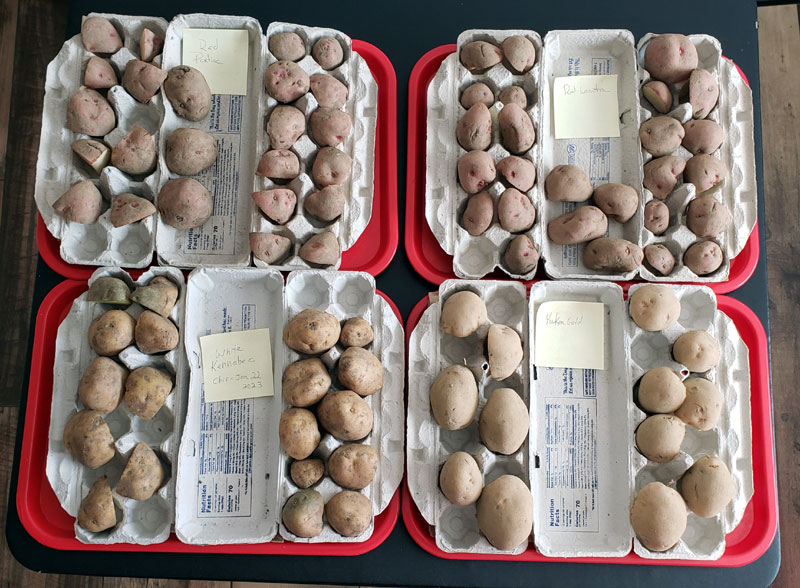
By the middle of week three, all the tomatoes had come up in the seed starting trays, most of the peppers too, except the jalapenos I had saved from seed from store-bought peppers. The marigolds and calendula were also growing strong.
The weather had been dry lately and every few nights Mike and I would water the trees and raised beds after we got home from work.
Journal Entries Week 4
The last weekend of the month we were lumberjacks.
Yes, really!
Mike and I cut down 3 leaning pines along the east fence row of the garden. After our adventures with Hurricane Ian last fall, we wanted to prevent any more trees from falling into the garden or onto the garden shed.
Our first tree, was a dead stump about 14 feet tall. Cutting it down was the easiest part of the whole project.
Next, Mike climbed up an extension ladder and attached a chain around one of the leaning pines. This chain was attached to several heavy chains which were joined and attached to the trailer hitch of Mike’s truck. It was my job to pull on the chains to direct the fall of the tree while Mike cut with the chainsaw. Keeping the tension on the chain without pulling too hard or too fast was challenging for me, but the tree fell just where Mike had planned.
We limbed the tree and pulled the branches aside. Then, once more, Mike climbed the ladder and attached the chains to another leaner. I’ll be honest, I was nervous pulling the chains with the truck. Even though I could see Mike in the rear view mirror, I didn’t want to pull a tree down on him. But Mike was as cool as a cucumber, and had everything under control. The second tree came down almost as easily as the first, with just an extra tug as he finished the cut at the base.
The last tree was short and tied up with greenbrier vines. Mike used the tractor forks to pull down a lot of the vines. Then, it was only a quick cut with the chainsaw to bring it down. Again, Mike cut the branches off and we piled them up to dry so we could chip them later this spring or summer.
We used several of the pine tree trunks to line the fence row and create a border between the garden and the “wild” area under the pines. Then we had fun arranging pine logs under the large oak out front to create flower bed borders.
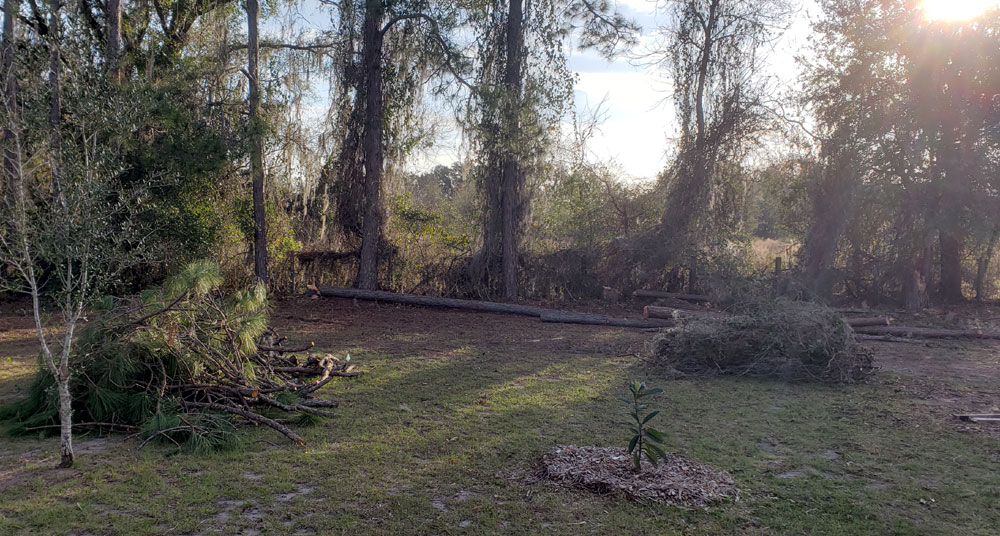
Other homestead design plans we worked on that day included planting 4 persimmon trees in the pasture, moving a wooden fence post, and planting wildflowers.
Sunday was just as busy. I finished thinning another raised bed of carrots and beets. All of the kitchen window plants were placed somewhere in the food forest. I cleaned a bunch of small pots to prepare them for potting up the tomatoes and peppers.
We found some spring webworms on the wild cherry trees. To control them, we cut the branches off and burned the webworms. They come out in the spring and eat the leaves of trees. The caterpillars are not harmful to humans or pets, but they sure look creepy crawling over each other inside their tent! These were the Eastern Tent Caterpillars which are very common, and are fond of wild cherry trees.
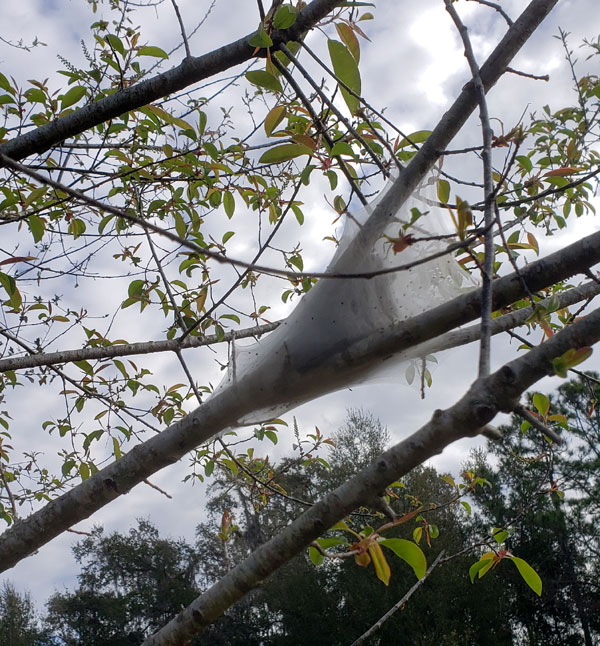
January wouldn’t be complete without the annual migration of robins to our area. For several weeks robins and other song birds took refuge on our property before continuing their migration north.
What a difference one year can make! From homesteading in the suburbs of Orlando Florida, to a rural homestead an hour from the city, you can read my post from my Garden Journal January of 2022 and see how far we’ve come.
What’s Blossoming Now
- Wildflowers in the garden, along the fencerows, and in the lawn
- Christmas Cacti
- One Lemon Tree
- Loquat
Harvest Summary
- Mixed greens including arugula and mustards
- Carrot fingerlings
- Beet greens
- Onions
Resources
- What is a VFN tomato?
- How do You Chit Potatoes?
- Eastern Tent Caterpillars
- HomesteadByDesign – My Etsy Shop
What’s Next
Our winters here in Florida are so different from where I grew up in the much colder climate of Michigan. It’s a busy season in the winter, and I enjoy growing the cool weather veggies like the root crops of carrots, beets, cabbages, and many varieties of greens for salads.
February is when the warm weather crops start getting planted. Soon I’ll be putting tomatoes, peppers, luffa, beans, and other sun-lovers into the raised beds and forest gardens.
What do You Think?
With Valentine’s Day approaching, I’d like to ask: What do you love about gardening?
I love:
- The wonderful flavor of freshly harvested food.
- Knowing what (if any) pesticides might be on my food, and how the soil has been fed.
- Growing foods I can’t find in a store, or are outrageously expensive to purchase.
- Experimenting with new foods and ornamentals.
- Always learning!
Thanks for joining me on my gardening journey.
Alisa
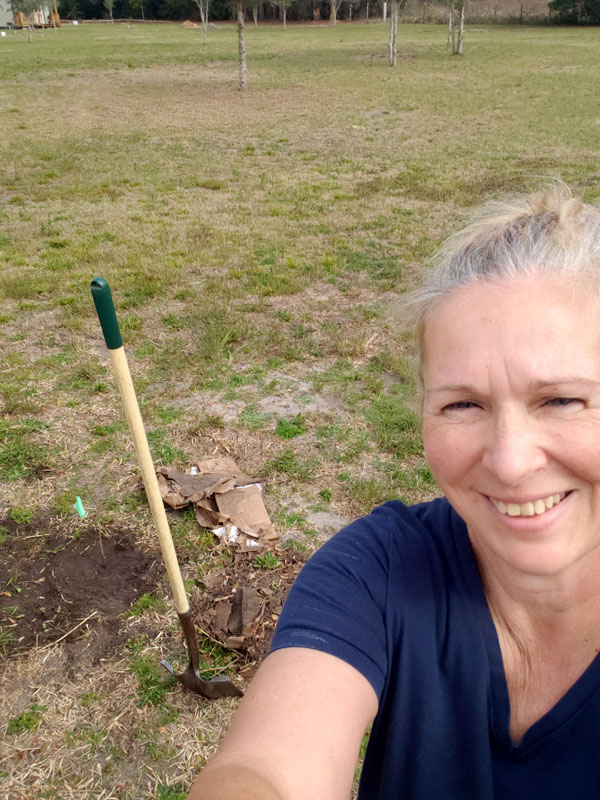
[…] Read: Seed Saving 101, an introduction to the basics of home garden seed saving. Learn how I started tomato and peppers from seeds I had saved and bought in my Garden Journal Post: January 2023. […]